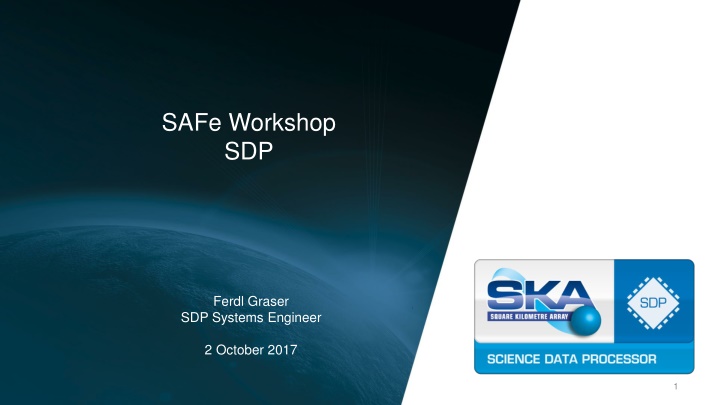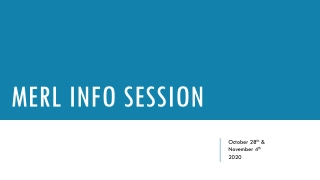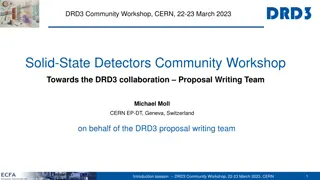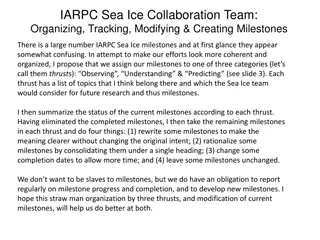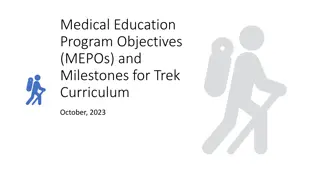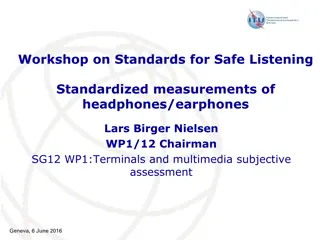SAFe Workshop Milestones Overview
SAFe (Scaled Agile Framework) defines three types of milestones, including PI milestones, fixed-date milestones, and learning milestones. These milestones provide objective evidence of working systems and drive performance verification in the Systems Development Program (SDP) at scale. The background of milestones emphasizes continuous improvement and incremental build-up of content to deliver value efficiently. Construction plans in SAFe are essential for SDP construction, focusing on risk management and stakeholder interaction to balance cost and performance effectively.
Download Presentation

Please find below an Image/Link to download the presentation.
The content on the website is provided AS IS for your information and personal use only. It may not be sold, licensed, or shared on other websites without obtaining consent from the author.If you encounter any issues during the download, it is possible that the publisher has removed the file from their server.
You are allowed to download the files provided on this website for personal or commercial use, subject to the condition that they are used lawfully. All files are the property of their respective owners.
The content on the website is provided AS IS for your information and personal use only. It may not be sold, licensed, or shared on other websites without obtaining consent from the author.
E N D
Presentation Transcript
SAFe Workshop SDP Ferdl Graser SDP Systems Engineer 2 October 2017 1
Milestones SAFe defines 3 types of milestones PI milestones: objectively evaluate progress towards the technical or business hypothesis. Occur at PI cadence. Fixed-date milestones: milestones driven by external events, third-party deliverables, external constraints, etc. These often call for fixed-date milestones that are distinct from the development cadence. Learning milestones: demonstrate evidence of the viability of the current in-process solution. 2
Milestones PI & Learning Milestones Provide objective evidence of working systems Performance Verification milestones Risk driven step-wise performance evaluation of SDP at scale Evaluation of alternative design options (set-based design) The specific date at which these milestones occur is not important, rather the value added by objective measurement of a working system. 3
Milestones Milestone background: No reviews, sign-offs or formal baselines Minimal Viable Product as early as possible Incremental build-up of content Working and tested systems plan/milestones will change Based on output of learning milestones Continuous improvement: removing waste (non value adding activities) 4
Construction Plan Vision SAFe is essential for SDP construction Risk driven Balance lifetime cost against performance Requires close stakeholder (SKAO) interaction to do trade-offs Lots of unknowns Construction Plan has been designed to minimise cost and risk SDP Cost Estimate is based on the same principles and plan Based on experience and risk register from SDP pre- construction 7
Construction Plan Vision 2 track s/w construction approach SDP Commissioning and AIV support system SDP Operational System Minimal viable product established early on Functionality and performance added according to WSJF (driven by science value) Set-based design and construction elements Execution Frameworks Continued architecture refinement and detailed design through to product delivery 8
Construction Plan Vision Verification and testing approach Bulk of functional verification will be done via System Demos Performance verification will be larger tests, see performance verification milestones Transition between Construction and Operations can be a soft transition 9
Program Solution Intent Solution intent is the repository for storing, managing, and communicating the knowledge of current and intended Solution behavior. Where required, this includes documented, fixed, and variable specifications and designs; reference to applicable standards, system models, functional and nonfunctional tests; and traceability. Specifications: L2 requirements (incl ASRs), ICDs Design: Architecture documentation (views & beyond) & supporting documentation, analysis, etc. Tests: functional & performance verification/testing documentation 10
